Educational Content or Advice and Lifehack
It is interesting to wonder how many people of the younger generation are familiar with the phrase “Study, study, and study.” It is doubtful that today's youth know who uttered this unbearable wisdom. So, let us lift the veil of this seemingly pointless mystery. Dear young people, this aphorism belongs to Vladimir Ilyich Lenin. Usually, it ended with the clarification — “as the great Lenin bequeathed.”
Yet, the injunction to “study, study, and study” was not originally addressed to schoolchildren or students. The beloved phrase of Soviet-era teachers is, in fact, ruthlessly torn out of context. More precisely — from one of Lenin’s articles. Lenin wrote: “While the educated society loses interest in honest, illegal literature, among the workers there grows a passionate desire for knowledge and socialism; among the workers emerge true heroes who — despite the abominable conditions of their lives, despite the numbing hard labor at the factory — find within themselves enough character and willpower to study, study, and study, and to cultivate themselves into conscious social democrats, the ‘working intelligentsia.’”

Times have changed. Now, to study and “cultivate oneself into a conscious social democrat,” it is no longer necessary to spend hours in public libraries poring over dull textbooks. Modern people increasingly prefer to delve into the granite of knowledge without leaving their own homes. And all thanks to the development of the internet and, oddly enough, the recent pandemic.
According to the relentless statistical data from Mediascope, in April 2022, 80% of the population in Russia aged over 12 years old, or 97.5 million people, used the internet. Currently, the average user spends almost seven hours a day online — that is, over 40% of their waking life.
So, where do precious minutes, hours, and years of life go for those trapped in the global web? What do users find there? Communication, music, videos. Scrolling, and since February last year — doomscrolling, woe to it. And also — learning.
A significant surge in the popularity of distance learning occurred during the pandemic. Unable to att end educational institutions, schoolchildren and students studied online. And members of the adult generation, quite literally out of boredom, rushed to master things for which they previously had no time. Everything was put to use — streams, video instructions, screencasts, video lessons, webinars, online courses, educational platforms, massive open online courses, and even simply communicating with teachers via webcam. Suddenly it became clear that many professions and skills could be mastered online — from IT to the gymnastics of Slavic enchantresses.
end educational institutions, schoolchildren and students studied online. And members of the adult generation, quite literally out of boredom, rushed to master things for which they previously had no time. Everything was put to use — streams, video instructions, screencasts, video lessons, webinars, online courses, educational platforms, massive open online courses, and even simply communicating with teachers via webcam. Suddenly it became clear that many professions and skills could be mastered online — from IT to the gymnastics of Slavic enchantresses.
In 2021, 18 million people studied online; for the first time, Russians spent more on online education than on in-person learning. Moreover, the main portion of funds spent on online education was allocated to professional development. Business training reigns supreme.
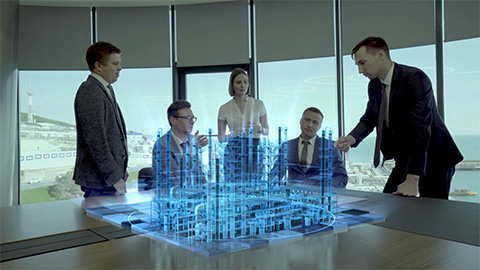
Time dictates its own rules. To master new professions, learn to think in Spanish, pose correctly in front of the camera, assemble furniture from pallets, multiply seven-digit numbers mentally, breathe with the uterus, or cook fantastic lasagna following Gordon Ramsay’s recipe, people need quality educational content.
Conventionally, educational video content can be divided into several types:
-
Screencast
This is a recording of video from a computer or s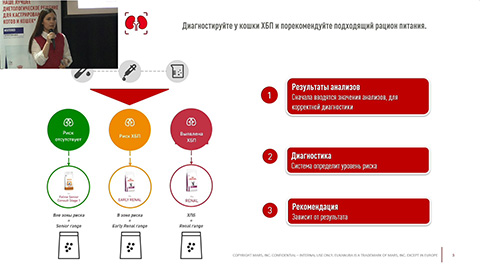 martphone screen. A true salvation for those who “pressed something and everything broke,” i.e., those who simply do not understand what to do with a particular software program. One of the most popular types of educational content among users of professional photo and video editors. Turn on the screencast — watch, apply. Forgot — watch again. To prevent the viewer from jumping from your screencast to someone else’s, it is better not to waste time on lengthy introductions but to immediately state the problem and promptly begin the solution. Ideally, accompany your screencast with subtitles. Firstly, the viewer can watch it without sound, which is quite appropriate in crowded places (such as an office); secondly, not all voices, diction, pronunciation peculiarities, and grammar are equally perfect. Give the viewer a choice.
martphone screen. A true salvation for those who “pressed something and everything broke,” i.e., those who simply do not understand what to do with a particular software program. One of the most popular types of educational content among users of professional photo and video editors. Turn on the screencast — watch, apply. Forgot — watch again. To prevent the viewer from jumping from your screencast to someone else’s, it is better not to waste time on lengthy introductions but to immediately state the problem and promptly begin the solution. Ideally, accompany your screencast with subtitles. Firstly, the viewer can watch it without sound, which is quite appropriate in crowded places (such as an office); secondly, not all voices, diction, pronunciation peculiarities, and grammar are equally perfect. Give the viewer a choice. -
Webinar
Essentially, t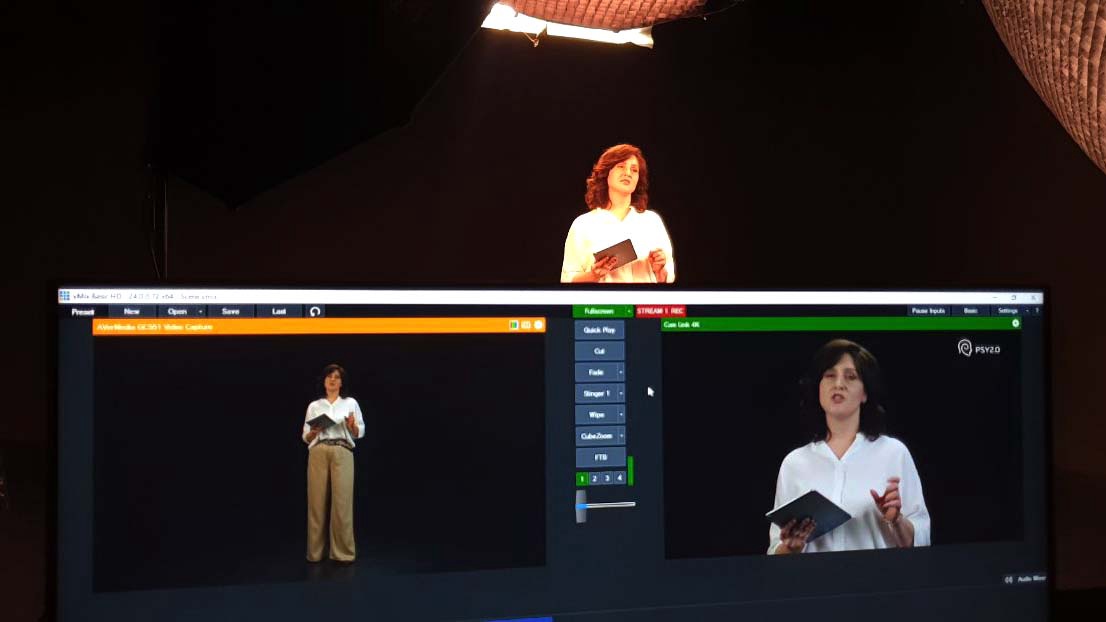 his is an online broadcast of an educational event. Typically, a webinar is conducted by a person visible on the screen. A webinar can include other types of educational content — presentations, videos, infographics, etc. The popularity of a webinar depends not only on the relevance of its topic but also on the charisma and competence of the presenter. A boring speaker risks finishing their educational speech alone, no matter how sensational the topic.
his is an online broadcast of an educational event. Typically, a webinar is conducted by a person visible on the screen. A webinar can include other types of educational content — presentations, videos, infographics, etc. The popularity of a webinar depends not only on the relevance of its topic but also on the charisma and competence of the presenter. A boring speaker risks finishing their educational speech alone, no matter how sensational the topic.
Webinars can be open (anyone can watch) or closed (access via personal link). -
Lecture
As with webinars, the success and popularity of a lecture directly depend on the speaker’s charisma. Incidentally, unlike a screencast, the lecturer does not need perfect diction. Strangely enough, sometimes slight speech defects or peculiarities become the speaker’s trademark. -
Video Presentation
A synthesis of several typ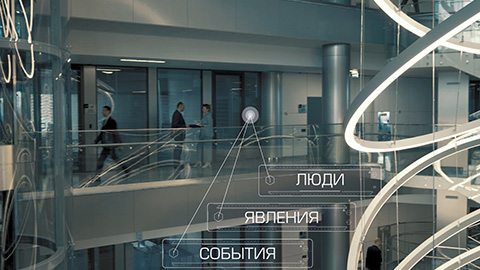 es of educational content at once. Typically, a presentation involves a host plus presentation materials — infographics, videos, animation. The key to success is to stick exactly to the topic, avoiding narcissism, autobiographical tales, or philosophical rambling. If you want to present — present clearly, vividly, effectively, and understandably.
es of educational content at once. Typically, a presentation involves a host plus presentation materials — infographics, videos, animation. The key to success is to stick exactly to the topic, avoiding narcissism, autobiographical tales, or philosophical rambling. If you want to present — present clearly, vividly, effectively, and understandably. -
Interview
Most often, this form of educational video is a dialogue between a host and an expert. The interview may be pre-recorded or streamed live. In the latter case, viewers have the opportunity to ask the expert questions directly and receive immediate answers. -
Educational Film
The first educatio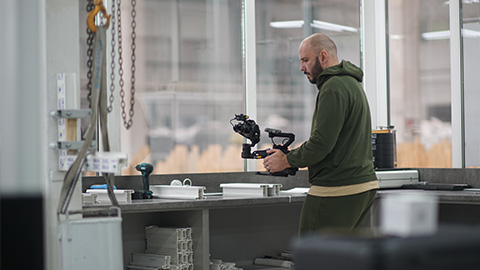 nal films appeared back in the Soviet education system. Schoolchildren loved them then — for the mysterious dimness of the classrooms (windows were almost entirely shaded for film showings), and for the opportunity to do nothing during the lesson, legally gazing at spaceships roaming the vast universe accompanied by expressive narration. Modern schoolchildren are not surprised by such films. The notorious “clip thinking” of today’s generation demands dynamics, special effects, short and clear messages. The quality of an educational film must be high because children already watch gigabytes of haphazardly made bloggers’ streams. That content is not associated with useful knowledge. Want to teach? Show something high-quality, interesting, bright, and not boring.
nal films appeared back in the Soviet education system. Schoolchildren loved them then — for the mysterious dimness of the classrooms (windows were almost entirely shaded for film showings), and for the opportunity to do nothing during the lesson, legally gazing at spaceships roaming the vast universe accompanied by expressive narration. Modern schoolchildren are not surprised by such films. The notorious “clip thinking” of today’s generation demands dynamics, special effects, short and clear messages. The quality of an educational film must be high because children already watch gigabytes of haphazardly made bloggers’ streams. That content is not associated with useful knowledge. Want to teach? Show something high-quality, interesting, bright, and not boring. -
Scribing
Also called doodle animation. What is this? Imagine a teacher explaining a concept by drawing a diagram on the board. Those drawings transferred to the screen essentially form doodle animation. That is, it’s a video where the presenter’s hand draws something simple and clear, accompanied by spoken explanation. Examples include videos demonstrating mathematical “tricks” with multiplication tables. -
Animation
An ideal type of vid eo instruction. Animated characters demonstrate by example how to properly handle something or serve as hosts. Much animated educational video is made for toddlers — using cute, bright characters to teach colors, objects, natural phenomena, seasons... However, animation works just as well for adults. The key is to choose the right characters. A pink bear speaking in a thin voice is hardly a suitable tutor for a top manager taking a course called “100% Leadership in a Large Company.”
eo instruction. Animated characters demonstrate by example how to properly handle something or serve as hosts. Much animated educational video is made for toddlers — using cute, bright characters to teach colors, objects, natural phenomena, seasons... However, animation works just as well for adults. The key is to choose the right characters. A pink bear speaking in a thin voice is hardly a suitable tutor for a top manager taking a course called “100% Leadership in a Large Company.” -
Masterclass
Remember “Ochu-melye ruchki” (“Skillful Hands”)? This was a segment of a Russian TV program in the early ’90s called “Poka vse doma” (“While Everyone is Home”). Two men on screen showed how to make something useful out of a useless object, like turning a cocktail straw into an inhaler. Besides being curious about their inventions, viewers enjoyed the men’s serious faces while creating utter nonsense. Ordinary people took them at face value; intellectuals saw it as good satire. Whatever the case, the essence of masterclasses as educational videos remains the same: the host shows and comments on a sequence of actions leading to the desired result. One popular type of masterclass is life hacks.
ruchki” (“Skillful Hands”)? This was a segment of a Russian TV program in the early ’90s called “Poka vse doma” (“While Everyone is Home”). Two men on screen showed how to make something useful out of a useless object, like turning a cocktail straw into an inhaler. Besides being curious about their inventions, viewers enjoyed the men’s serious faces while creating utter nonsense. Ordinary people took them at face value; intellectuals saw it as good satire. Whatever the case, the essence of masterclasses as educational videos remains the same: the host shows and comments on a sequence of actions leading to the desired result. One popular type of masterclass is life hacks. -
3D Visualization and Augmented Reality
One of the most expen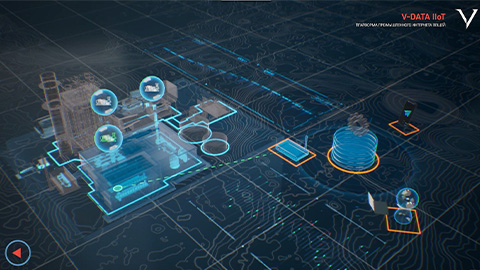 sive types of educational content since only 3D graphics specialists can create such videos. Augmented reality is widely used in various simulators — from driving courses to astronaut training. The capabilities of 3D graphics allow penetrating inside mechanisms and organisms to see what is impossible in real life. 3D visualization can “revive” famous personalities, show long-lost ancient artifacts, and of course, create your own reality.
sive types of educational content since only 3D graphics specialists can create such videos. Augmented reality is widely used in various simulators — from driving courses to astronaut training. The capabilities of 3D graphics allow penetrating inside mechanisms and organisms to see what is impossible in real life. 3D visualization can “revive” famous personalities, show long-lost ancient artifacts, and of course, create your own reality.
While describing types of educational video content, we realized we i nvented a few more during the writing of this article — apparently, none of which have yet been used for teaching. So, we shall conclude with these ten types of educational content for now and will produce a couple of new ones soon, which we will definitely share with you next time.
nvented a few more during the writing of this article — apparently, none of which have yet been used for teaching. So, we shall conclude with these ten types of educational content for now and will produce a couple of new ones soon, which we will definitely share with you next time.